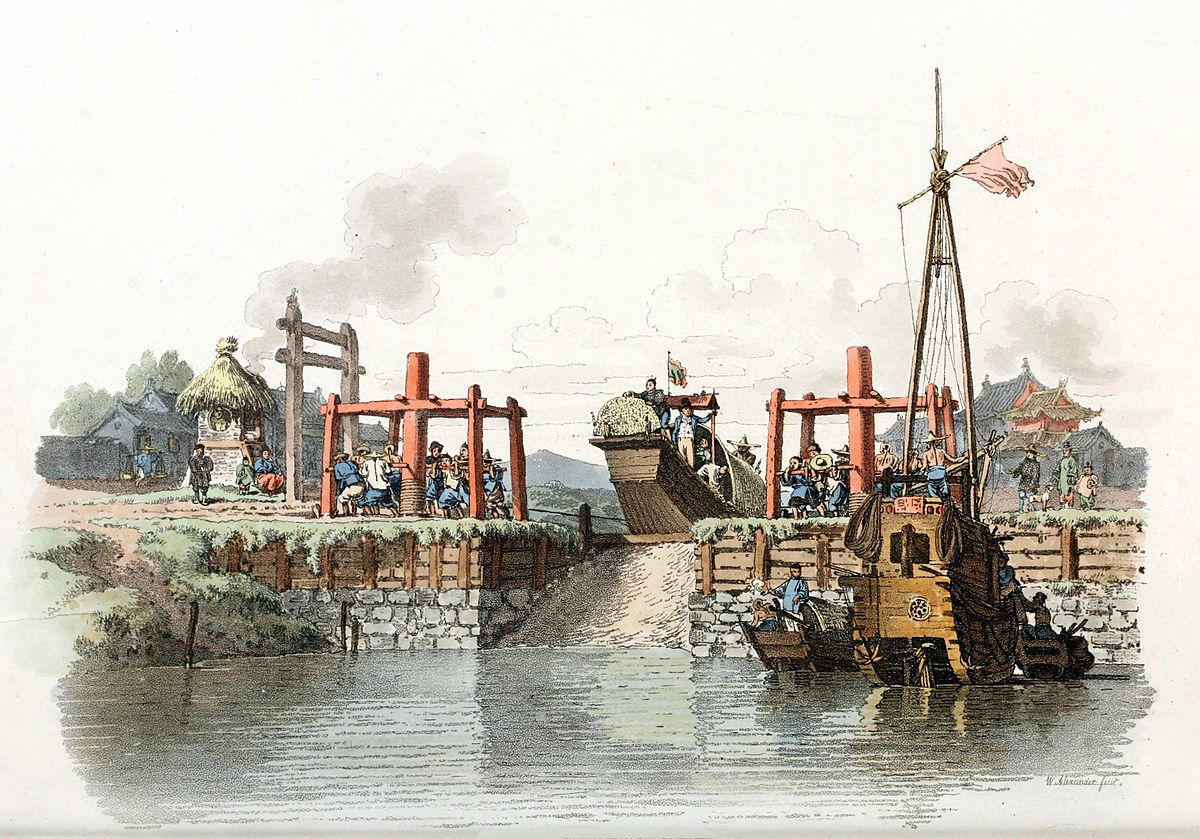
Grand Canal restoration
Grand Canal, Tongzhou, ChinaThe Grand Canal was renovated almost in its entirety between 1411 and 1415 during the Ming dynasty (1368–1644). A magistrate of Jining, Shandong sent a memorandum to the throne of the Yongle Emperor protesting the current inefficient means of transporting 4,000,000 dan (428,000,000 liters) of grain a year by means of transferring it along several different rivers and canals in barge types that went from deep to shallow after the Huai River, and then transferred back onto deep barges once the shipment of grain reached the Yellow River. Chinese engineers built a dam to divert the Wen River to the southwest in order to feed 60% of its water north into the Grand Canal, with the remainder going south. They dug four large reservoirs in Shandong to regulate water levels, which allowed them to avoid pumping water from local sources and water tables. Between 1411 and 1415 a total of 165,000 laborers dredged the canal bed in Shandong and built new channels, embankments, and canal locks.
The Yongle Emperor moved the Ming capital from Nanjing to Beijing in 1403. This move deprived Nanjing of its status as chief political center of China. The reopening of the Grand Canal also benefited Suzhou over Nanjing since the former was in a better position on the main artery of the Grand Canal, and so it became Ming China's greatest economic center. Therefore, the Grand Canal served to make or break the economic fortunes of certain cities along its route and served as the economic lifeline of indigenous trade within China.
Besides its function as a grain shipment route and major vein of river-borne indigenous trade in China, the Grand Canal had long been a government-operated courier route as well. In the Ming dynasty, official courier stations were placed at intervals of 35 to 45 km (22 to 28 mi).
